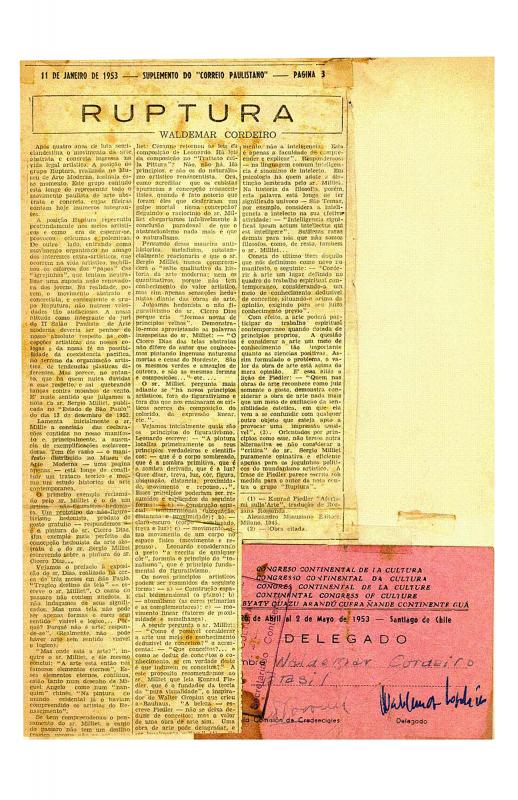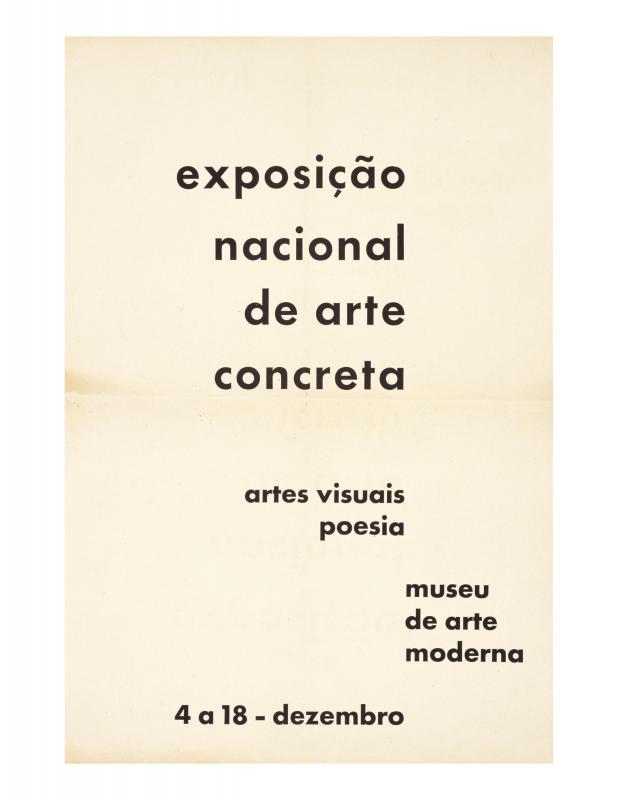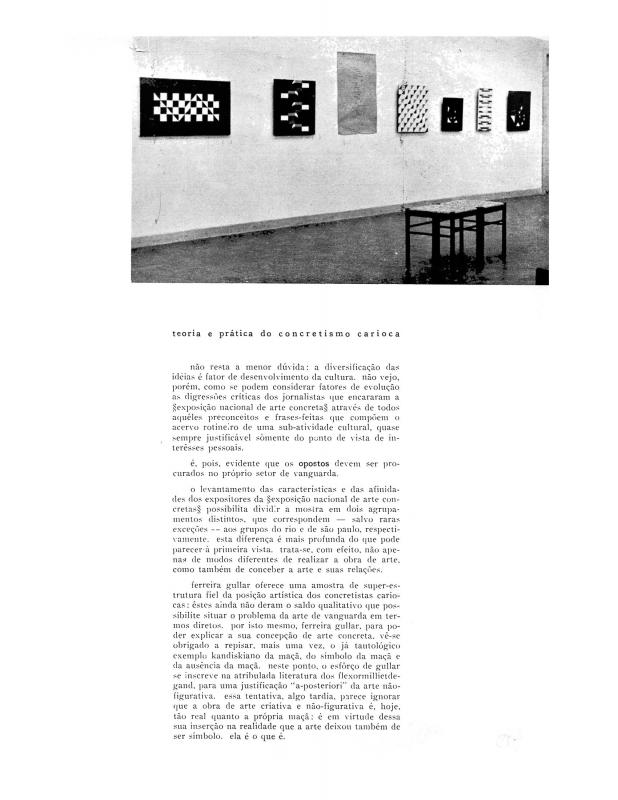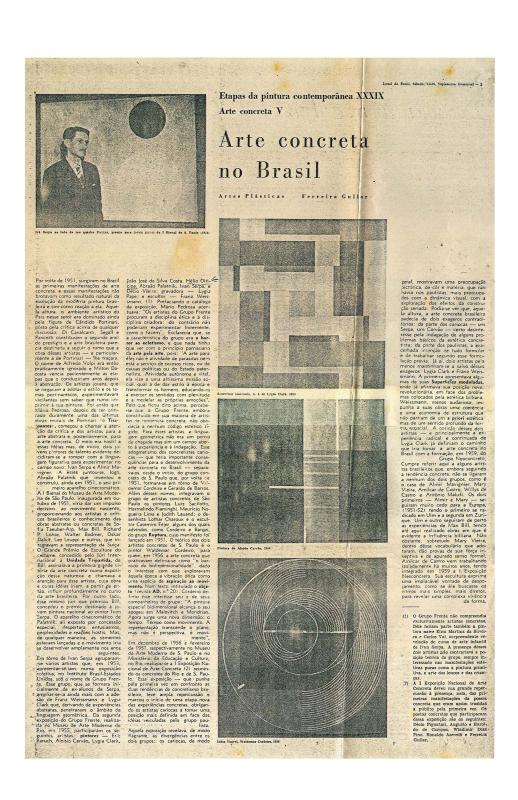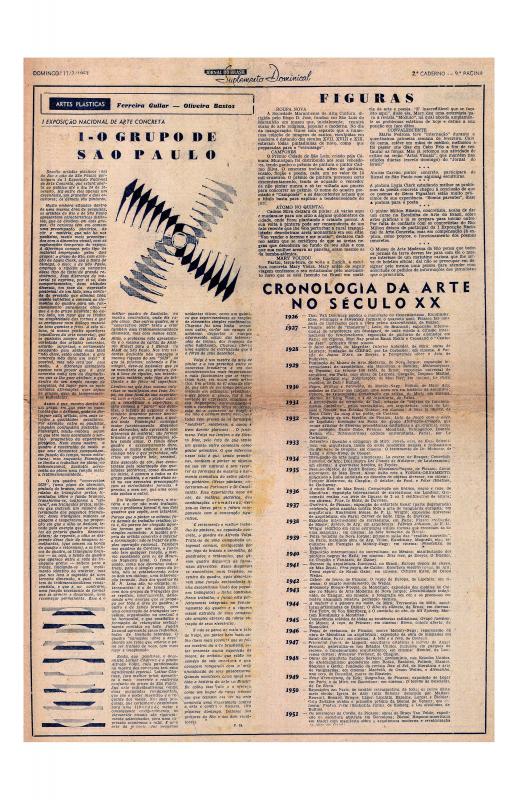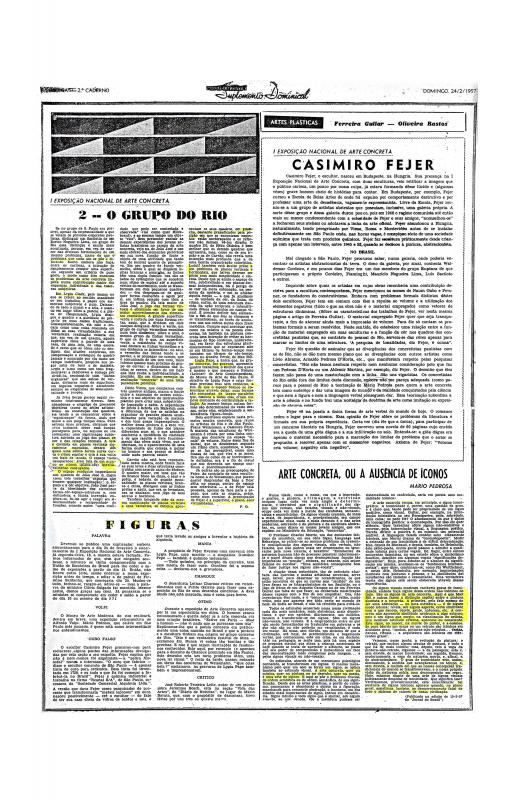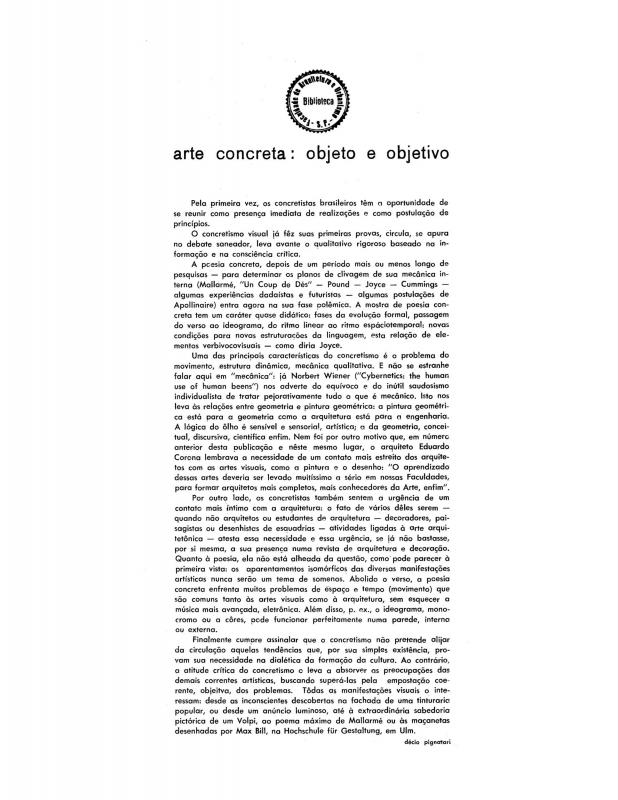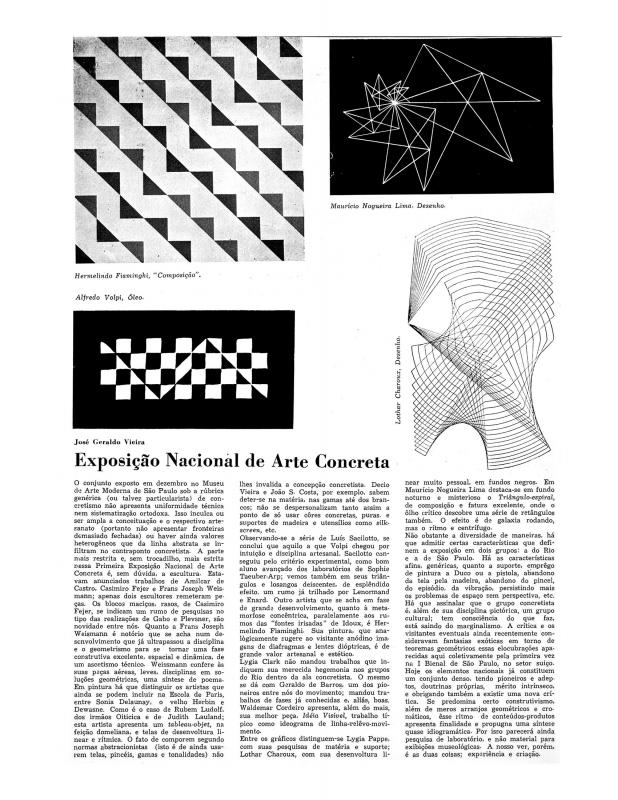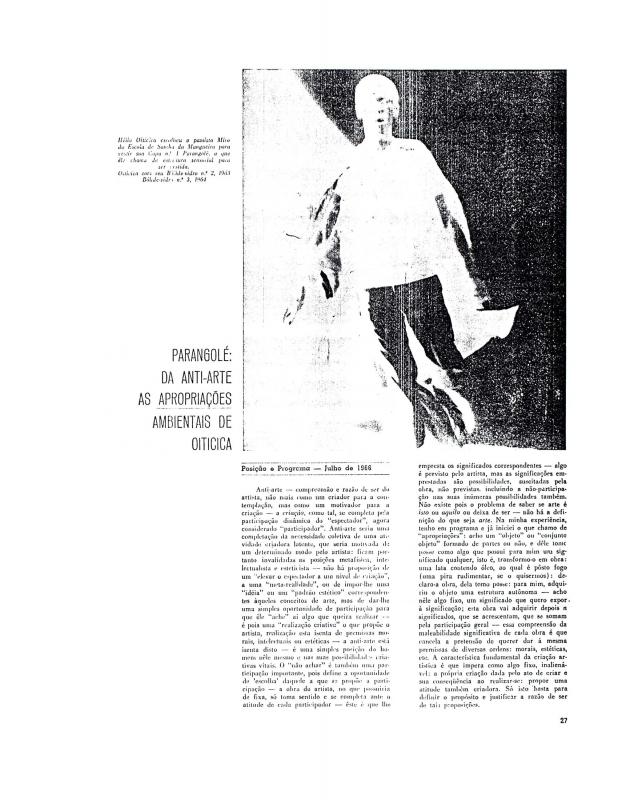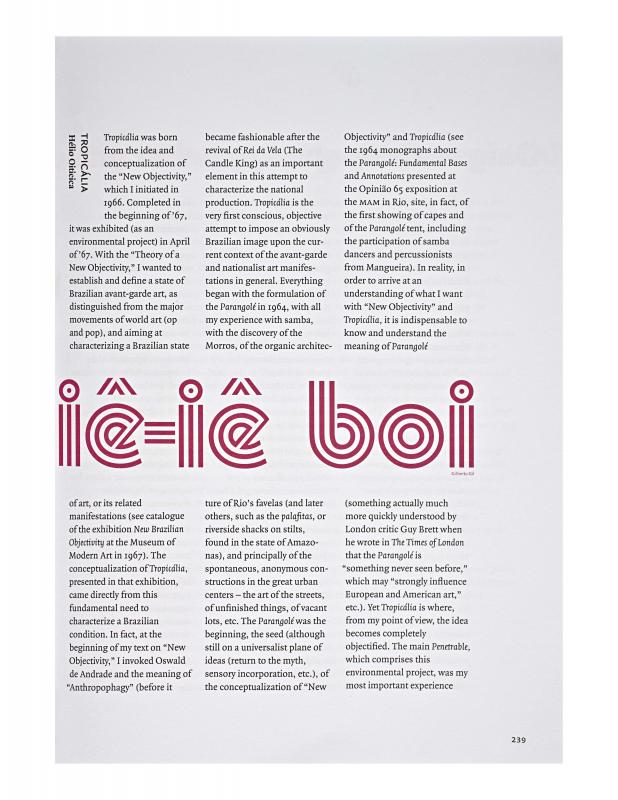Haroldo de Campos (1929–2003), his brother Augusto de Campos (b. 1931), and Décio Pignatari (1927–2012) started the Concrete poetry movement and then formed the Noigandres group in 1952. Over the course of the next ten years they published five issues of the eponymous magazine. The members of the Noigandres group reached out to intellectuals, painters, and sculptors who all joined forces in São Paulo in 1952, the year the Grupo ruptura was founded [see the ICAA Digital Archive (doc. no. 1085337)]. This essay explains how the painter José Roberto Aguilar, the director of the Casa de Rosas in São Paulo, tried to build a bridge between Concrete art and Concrete poetry by showing each one’s basic principles and inviting artists to “transcribe” onto the floor some short poems written by Concrete poets; these included, on the ground floor, Augusto de Campos as seen by Ze Netto, Haroldo de Campos as interpreted by Marco Giannotti, and Décio Pignatari. Upstairs, walls were hung with works by the main Concrete artists who participated in the original exhibition in 1956: Geraldo de Barros, Lygia Clark, Hermelindo Fiaminghi, Lygia Pape, and Amílcar de Castro, among others. One room was set aside for Waldemar Cordeiro and a twenty-meter long parangolé in memory of Hélio Oiticica—with whom they shared personal, but not theoretical bonds—who died in 1980.
[For more information about this landmark event in 1956, see “Esposição Nacional de Arte Concreta” (doc. no. 1305788) by Miguel Germano; “Exposição nacional de arte concreta: artes visuais poesia” (doc. no. 1232176) and “Teoria e prática do concretismo carioca” (doc. no. 1087287) by Waldemar Cordeiro; “Arte concreta no Brasil: etapas da pintura contemporânea” (doc. no. 1090830), “O Grupo de São Paulo: I Exposição Nacional de Arte Concreta” (doc. no. 1087166), and “I Exposição Nacional de Arte Concreta: - O grupo do Rio” (doc. no. 1090217) by Ferreira Gullar; “Arte concreta: objeto e objetivo” (doc. no. 1087349) by Décio Pignatari; and “Exposição Nacional de Arte Concreta” (doc. no. 1087109) by Jose Vieira.]
Hélio Oiticica (1937–80) studied painting under Ivan Serpa in 1954 at the MAM-RJ (Museu de Arte Moderna do Rio de Janeiro). He later joined the Grupo Frente (where he was also mentored by Serpa) and the Neo-Concrete art movement (quite some time after it started). In addition to his geometric paintings (the series known as Metaesquemas), which he made while he was still Serpa’s student, Oiticia also produced participatory performance art. His parangolés (1964), or “inhabitable paintings,” were capes, flags, and tents made with layers of painted fabric, plastic, screens, ropes, and other miscellaneous items. These works are representative of his experimentation with the concept of color-as-form and his relationship with the environment. They were originally intended to be worn by the dancers in the Escola de Samba de Mangueira to create an effect of “color in motion.”
[For Oiticica’s other writings on this subject, see: “Parangolé: da anti-arte as apropriações ambientais de Oiticica” (doc. no. 1110631) and “Tropicália” (doc. no. 1074985).]

